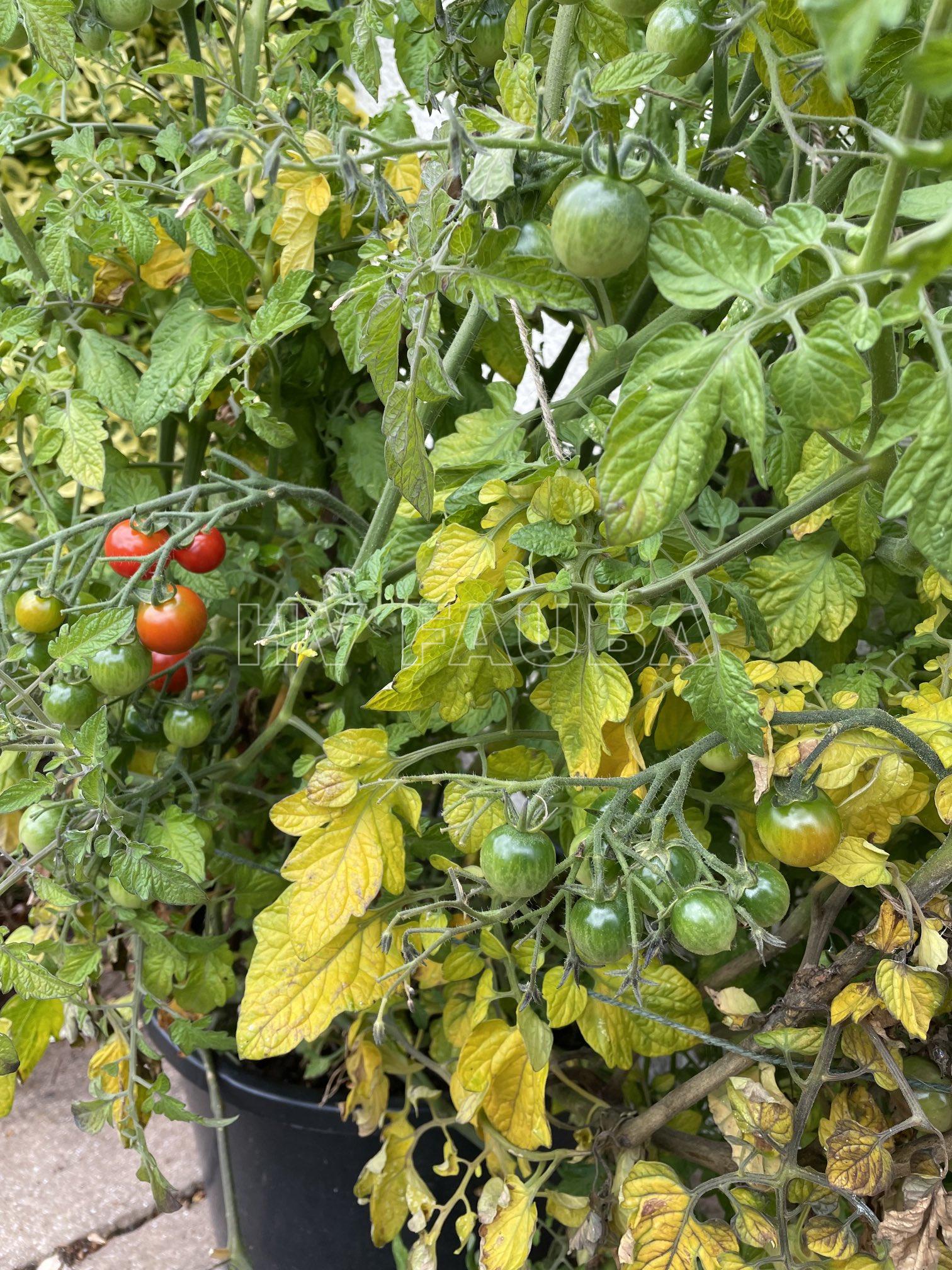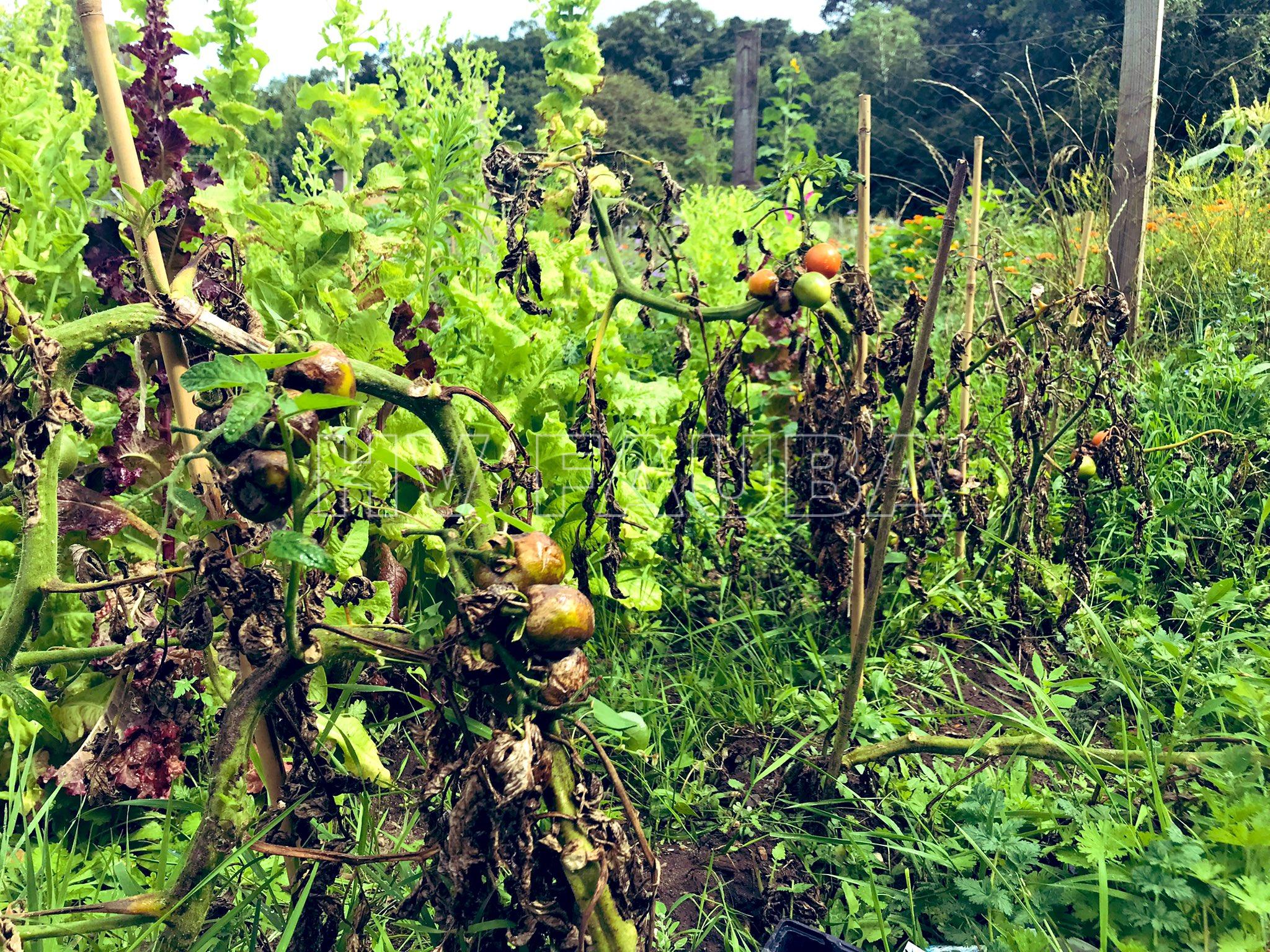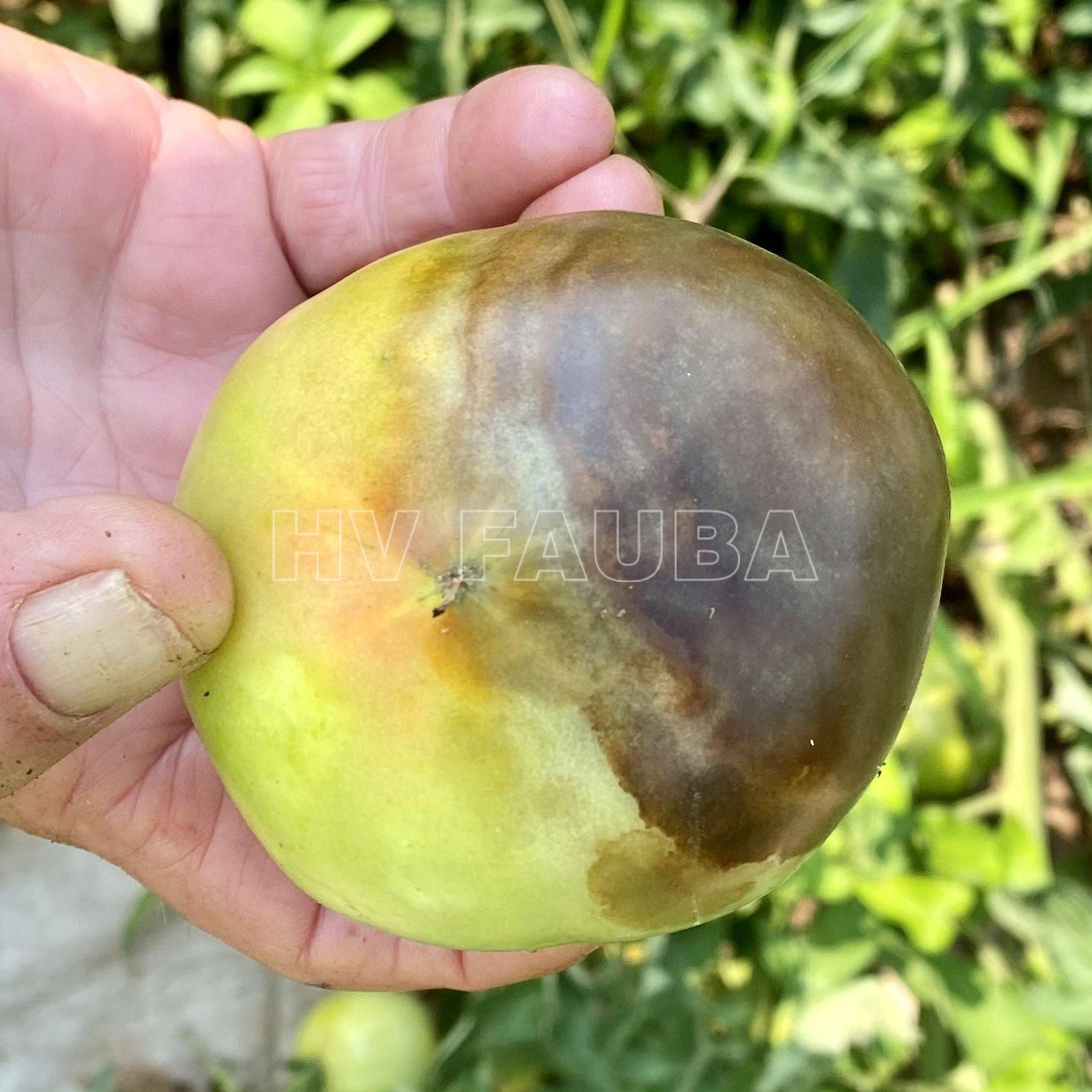.
Condición fitosanitaria: Presente
Grupo de cultivos: Hortícola
Especie hospedante: Tomate (Solanum lycopersicum = Lycopersicum esculentum)
Rango de hospedantes: amplio / no específico
Etiología: Pseudohongo. Necrotrófico
Agente causal: Phytophthora parasitica, Phytophthora capsici Leonian
Taxonomía: Eukaryota > Stramenopiles > Oomycetes > Peronosporales > Phytophthora
.
.
.
Sintomatología
- Autor: Nick Talbot
- Autor: Neftaly Cruz Mireles
- Autor: Zachariah Hansen
.
.
.
Bibliografía
Admassie M, Woldehawariat Y, Alemu T (2022) In Vitro Evaluation of Extracellular Enzyme Activity and Its Biocontrol Efficacy of Bacterial Isolates from Pepper Plants for the Management of Phytophthora capsici. Biomed Res Int. 2022: 6778352. doi: 10.1155/2022/6778352
Avila-Quezada GD, Rai M (2023) Novel nanotechnological approaches for managing Phytophthora diseases of plants. Trends Plant Sci.: S1360-1385(23)00102-4. doi: 10.1016/j.tplants.2023.03.022
Brasier C, Scanu B, Cooke D, Jung T (2022) Phytophthora: an ancient, historic, biologically and structurally cohesive and evolutionarily successful generic concept in need of preservation. IMA Fungus 13(1): 12. doi: 10.1186/s43008-022-00097-z
Cai M, Li T, Lu X, et al. (2021) Multiple mutations in the predicted transmembrane domains of the cellulose synthase 3 (CesA3) of Phytophthora capsici can confer semi-dominant resistance to carboxylic acid amide fungicides. Int J Biol Macromol. S0141-8130(21)02464-8. doi: 10.1016/j.ijbiomac.2021.11.066
Cai L, Huang X, Feng H, et al. (2023) Antimicrobial mechanisms of g-C3N4@ZnO against oomycetes Phytophthora capsici: From its metabolism, membrane structures and growth. Pest Manag Sci. doi: 10.1002/ps.7946
Chen Y, Zhang S, Tian Y, et al. (2023) Synthesis, Anti-Oomycete and Anti-fungal Activities of Novel Cinchona Alkaloid Derivatives Containing Sulfonate Moiety. Chem Biodivers.: e202300607. doi: 10.1002/cbdv.202300607
Cheng W, Lin M, Chu M, et al. (2022) RNAi-based gene silencing of RXLR effectors protects plant against the oomycete pathogen Phytophthora capsici. Mol Plant Microbe Interact. doi: 10.1094/MPMI-12-21-0295-R
Cui T, Ma Q, Zhang F, et al. (2023) Characterization of PcSTT3B as a Key Oligosaccharyltransferase Subunit Involved in N-glycosylation and Its Role in Development and Pathogenicity of Phytophthora capsici. International Journal of Molecular Sciences 24(8): 7500. doi: 10.3390/ijms24087500
Dai T, Wang Z, Cheng X, et al. (2022) Uncoupler SYP-14288 inducing multidrug resistance of Phytophthora capsici through overexpression of cytochrome P450 monooxygenases and P-glycoprotein. Pest Manag Sci. doi: 10.1002/ps.6845
Dura S, Lujan P, Guzman I, et al. (2021) A Field Evaluation of Jalapeño and Non-Jalapeño Chile Pepper Resistance to Phytophthora Blight Caused by Phytophthora capsici. Plant Health Progress. doi: 10.1094/PHP-02-21-0029-FI
Fan G, Zou A, Wang X, et al. (2022) Polymorphic Microsatellite Development, Genetic Diversity, Population Differentiation and Sexual State of Phytophthora capsici on Commercial Peppers in Three Provinces of Southwest China. Appl Environ Microbiol.: e0161122. doi: 10.1128/aem.01611-22
Gao RF, Wang JY, Liu KW, et al. (2021) Comparative analysis of Phytophthora genomes data. Data Brief. 39: 107663. doi: 10.1016/j.dib.2021.107663
Gao H, Guo Y, Ren M, et al. (2023) Phytophthora RxLR effector PcSnel4B promotes degradation of resistance protein AtRPS2. Plant Physiol.: kiad404. doi: 10.1093/plphys/kiad404
Gou X, Zhong C, Zhang P, et al. (2022) miR398b and AtC2GnT form a negative feedback loop to regulate Arabidopsis thaliana resistance against Phytophthora parasitica. Plant J. doi: 10.1111/tpj.15792
Guo Y, Krasnow CS, Hausbeck M (2023) Characterizing the dynamics of virulence and fungicide resistance of Phytophthora capsici in Michigan vegetable fields reveals loci associated with virulence. Plant Dis. doi: 10.1094/PDIS-03-23-0576-RE
Han X, Xu R, Gu S, et al. (2024) Synthesis of Acrylopimaric Acid Triazole Derivatives and Their Antioomycete Activity against Phytophthora capsici. J Agric Food Chem. doi: 10.1021/acs.jafc.3c04148
He L, Wang M, Wang H, et al. (2022) iTRAQ proteomic analysis of the inhibitory effect of 1,6-O,O-diacetylbritannilactone on the plant pathogenic oomycete Phytophthora capsici. Pestic Biochem Physiol. 184: 105125. doi: 10.1016/j.pestbp.2022.105125
Hudson O, Waliullah S, Ji P, et al. (2021) Detection of Phytophthora capsici from Irrigation Ponds in South Georgia. Plant Health Progress. doi: 10.1094/PHP-02-21-0043-FI
Hunter S, Williams N, McDougal R, et al. (2018) Evidence for rapid adaptive evolution of tolerance to chemical treatments in Phytophthora species and its practical implications. PLoS One 13(12): e0208961. doi: 10.1371/journal.pone.0208961
Jedelská T, Sedlářová M, Lochman J, et al. (2021) Protein S-nitrosation differentially modulates tomato responses to infection by hemi-biotrophic oomycetes of Phytophthora spp. Hortic Res. 8(1): 34. doi: 10.1038/s41438-021-00469-3
Kato F, Ando Y, Tanaka A, et al. (2022) Inhibitors of Asexual Reproduction of the Plant Pathogen Phytophthora from Tomato Juice: Structure-Activity Relationships and Transcriptome Analysis. J Agric Food Chem. doi: 10.1021/acs.jafc.2c05556
Kato F, Ando Y, Tanaka A, et al. (2022) Synthesis of aglycones, structure-activity relationships, and mode of action of lycosides as inhibitors of the asexual reproduction of Phytophthora. Biosci Biotechnol Biochem. : zbac179. doi: 10.1093/bbb/zbac179
Kronmiller BA, Feau N, Shen D, et al. (2023) Comparative Genomic Analysis of 31 Phytophthora Genomes Reveals Genome Plasticity and Horizontal Gene Transfer. Mol Plant Microbe Interact. 36(1): 26-46. doi: 10.1094/MPMI-06-22-0133-R
Lei G, Zhou KH, Chen XJ, et al. (2023) Transcriptome and metabolome analyses revealed the response mechanism of pepper roots to Phytophthora capsici infection. BMC Genomics 24: 626. doi: 10.1186/s12864-023-09713-7
Li H, Wang N, Ding J, et al. (2022) Spatial Distribution of the Pepper Blight (Phytophthora capsici) Suppressive Microbiome in the Rhizosphere. Front Plant Sci. 12: 748542. doi: 10.3389/fpls.2021.748542
Li T, Cai M, Wang W, et al. (2022) PcCesA1 is involved in the polar growth, cellulose synthesis, and glycosidic linkage crosslinking in the cell wall of Phytophthora capsici. Int J Biol Macromol. 208: 720-730. doi: 10.1016/j.ijbiomac.2022.03.170
Li Y, Xu Z, Chen L, et al. (2022) New metabolites from Streptomyces pseudovenezuelae NA07424 and their potential activity of inducing resistance in plants against Phytophthora capsici. Pest Manag Sci. doi: 10.1002/ps.7204
, , , et al. (2022) A Phytophthora capsici RXLR effector manipulates plant immunity by targeting RAB proteins and disturbing the protein trafficking pathway. Molecular Plant Pathology 00: 1– 16. doi: 10.1111/mpp.13251
Lin X, Torres Ascurra YC, Fillianti H, et al. (2023) Recognition of Pep-13/25 MAMPs of Phytophthora localizes to an RLK locus in Solanum microdontum. Front Plant Sci. 13: 1037030. doi: 10.3389/fpls.2022.1037030
Liu Y, He P, He P, et al. (2022) Potential biocontrol efficiency of Trichoderma species against oomycete pathogens. Front Microbiol. 13: 974024. doi: 10.3389/fmicb.2022.974024
Liu Y, Li Y, Tian Y, et al. (2023) Synthesis of novel 18β-glycyrrhetinic acid sulfonate derivatives displaying significant anti-oomycete activity against Phytophthora capsici. Nat Prod Res.: 1-9. doi: 10.1080/14786419.2023.2280999
Meng Y, Zhang Q, Ding W, Shan W (2014) Phytophthora parasitica: a model oomycete plant pathogen. Mycology 5(2): 43-51. doi: 10.1080/21501203.2014.917734
Michael VN, Fu Y, Shrestha S, Meru G (2021) A Novel QTL for Resistance to Phytophthora Crown Rot in Squash. Plants (Basel). 10(10): 2115. doi: 10.3390/plants10102115
Neupane K, Ghimire B, Baysal-Gurel F (2022) Efficacy and Timing of Application of Fungicides, Biofungicides, Host-Plant Defense Inducers, and Fertilizer to Control Phytophthora Root Rot of Flowering Dogwoods in Simulated Flooding Conditions in Container Production. Plant Disease. doi: 10.1094/PDIS-02-22-0437-RE
Obregón V (2018) Guía para la identificación de las enfermedades de tomate en invernadero. INTA EEA Bella Vista. Link
Parada-Rojas CH, Granke LL, Naegele RP, et al. (2021) A Diagnostic Guide for Phytophthora capsici Infecting Vegetable Crops. Plant Health Progress. doi: 10.1094/PHP-02-21-0027-FI
Parada Rojas CH, Quesada-Ocampo L (2022) Phytophthora capsici populations are structured by host, geography, and fluopicolide sensitivity. Phytopathology. doi: 10.1094/PHYTO-09-21-0403-R
Quesada-Ocampo LM, Parada-Rojas CH, Hansen Z, et al. (2023) Phytophthora capsici: Recent Progress on Fundamental Biology and Disease Management 100 Years After Its Description. Annu Rev Phytopathol. doi: 10.1146/annurev-phyto-021622-103801
Rabuma T, Gupta OP, Yadav M, Chhokar V (2022) Integrative RNA-Seq analysis of Capsicum annuum L.-Phytophthora capsici L. pathosystem reveals molecular cross-talk and activation of host defence response. Physiol Mol Biol Plants. 28(1): 171-188. doi: 10.1007/s12298-021-01122-y
Ro N, Haile M, Hur O, et al. (2022) Genome-Wide Association Study of Resistance to Phytophthora capsici in the Pepper (Capsicum spp.) Collection. Front Plant Sci. 13: 902464. doi: 10.3389/fpls.2022.902464
Sanogo S, Lamour K, Kousik S, et al. (2022) Phytophthora capsici, 100 Years Later: Research Mile Markers from 1922 to 2022. Phytopathology. doi: 10.1094/PHYTO-08-22-0297-RVW
Seo YE, Lee HY, Kim H, et al. (2022) The Phytophthora capsici RxLR effector CRISIS2 triggers cell death via suppressing plasma membrane H +-ATPase in host plant. J Exp Bot.: erac500. doi: 10.1093/jxb/erac500
Situ J, Xi P, Lin L, et al. (2022) Signal and regulatory mechanisms involved in spore development of Phytophthora and Peronophythora. Front Microbiol. 13: 984672. doi: 10.3389/fmicb.2022.984672
Song W, Yin Z, Lu X, et al. (2023) Plant secondary metabolite citral interferes with Phytophthora capsici virulence by manipulating the expression of effector genes. Mol Plant Pathol. doi: 10.1111/mpp.13340
Su Y, Fan R, Hu LS, et al. (2022) An Effective Inoculation Method for Phytophthora capsici on Black Pepper Plants. J Vis Exp. (187). doi: 10.3791/63002
Szadkowski E, Lagnel J, Touhami N, et al. (2023) Phytophthora capsici genome assembly for two isolates using long-read Oxford Nanopore Technology sequencing. Microbiol Resour Announc.: e0019623. doi: 10.1128/MRA.00196-23
Vogel G, Giles G, Robbins KR, et al. (2022) Quantitative genetic analysis of interactions in the pepper-Phytophthora capsici pathosystem. Mol Plant Microbe Interact. doi: 10.1094/MPMI-12-21-0307-R
Volynchikova E, Kim KD (2023) Anti-Oomycete Activity and Pepper Root Colonization of Pseudomonas plecoglossicida YJR13 and Pseudomonas putida YJR92 against Phytophthora capsici. Plant Pathol J. 39(1): 123-135. doi: 10.5423/PPJ.OA.01.2023.0001
Wang W, Zhang F, Zhang S, et al. (2022) Phytophthora capsici sterol reductase PcDHCR7 has a role in mycelium development and pathogenicity. Open Biol. 12(4): 210282. doi: 10.1098/rsob.210282
Wang B, He B, Chen T, et al. (2022) Discovery of Tropolone Stipitaldehyde as a Potential Agent for Controlling Phytophthora Blight and Its Action Mechanism Research. J Agric Food Chem. doi: 10.1021/acs.jafc.2c03163
Wang Z, Gao X, Zhong S, et al. (2022) Host-induced gene silencing of PcCesA3 and PcOSBP1 confers resistance to Phytophthora capsici in Nicotiana benthamiana through NbDCL3 and NbDCL4 processed small interfering RNAs. Int J Biol Macromol. S0141-8130(22)02109-2. doi: 10.1016/j.ijbiomac.2022.09.178
Wang R, Zhou R, Meng Y, et al. (2023) Specific detection of Phytophthora parasitica by recombinase polymerase amplification (RPA) assays based on a unique multi-copy genomic sequence. Plant Dis. doi: 10.1094/PDIS-04-23-0722-RE
Wang B, Yang J, Zhao X, et al. (2023) Antifungal activity of the botanical compound rhein against Phytophthora capsici and the underlying mechanisms. Pest Manag Sci. doi: 10.1002/ps.7852
Xu J, Li Y, Jia J, et al. (2022) Mutations in PpAGO3 Lead to Enhanced Virulence of Phytophthora parasitica by Activation of 25-26 nt sRNA-Associated Effector Genes. Front Microbiol. 13: 856106. doi: 10.3389/fmicb.2022.856106
Yang C, Zheng B, Wang R, et al. (2022) A Putative P-Type ATPase Regulates the Secretion of Hydrolytic Enzymes, Phospholipid Transport, Morphogenesis, and Pathogenesis in Phytophthora capsici. Front Plant Sci. 13: 852500. doi: 10.3389/fpls.2022.852500
Yang K, Wang Y, Zhao H, et al. (2022) Novel EIicitin from Pythium oligandrum Confers Disease Resistance against Phytophthora capsici in Solanaceae Plants. J Agric Food Chem. doi: 10.1021/acs.jafc.2c06431
Zhang Y, Yin Z, Pi L, et al. (2023) A Nicotiana benthamiana receptor-like kinase regulates Phytophthora resistance by coupling with BAK1 to enhance elicitin-triggered immunity. J Integr Plant Biol. doi: 10.1111/jipb.13458
Zhou Y, Zhang Z, Bao Z, et al. (2022) Graph pangenome captures missing heritability and empowers tomato breeding. Nature. doi: 10.1038/s41586-022-04808-9
Zhou Y, Li Y, Yu T, etc. (2023) Characterization of the B-BOX gene family in pepper and the role of CaBBX14 in defense response against Phytophthora capsici infection. Int J Biol Macromol. 124071. doi: 10.1016/j.ijbiomac.2023.124071
Zhu L, Tian Y, Wang T, et al. (2023) Semisynthesis, anti-oomycete and anti-fungal activities of ursolic acid ester derivatives. Nat Prod Res. 1-10. doi: 10.1080/14786419.2023.2207135


